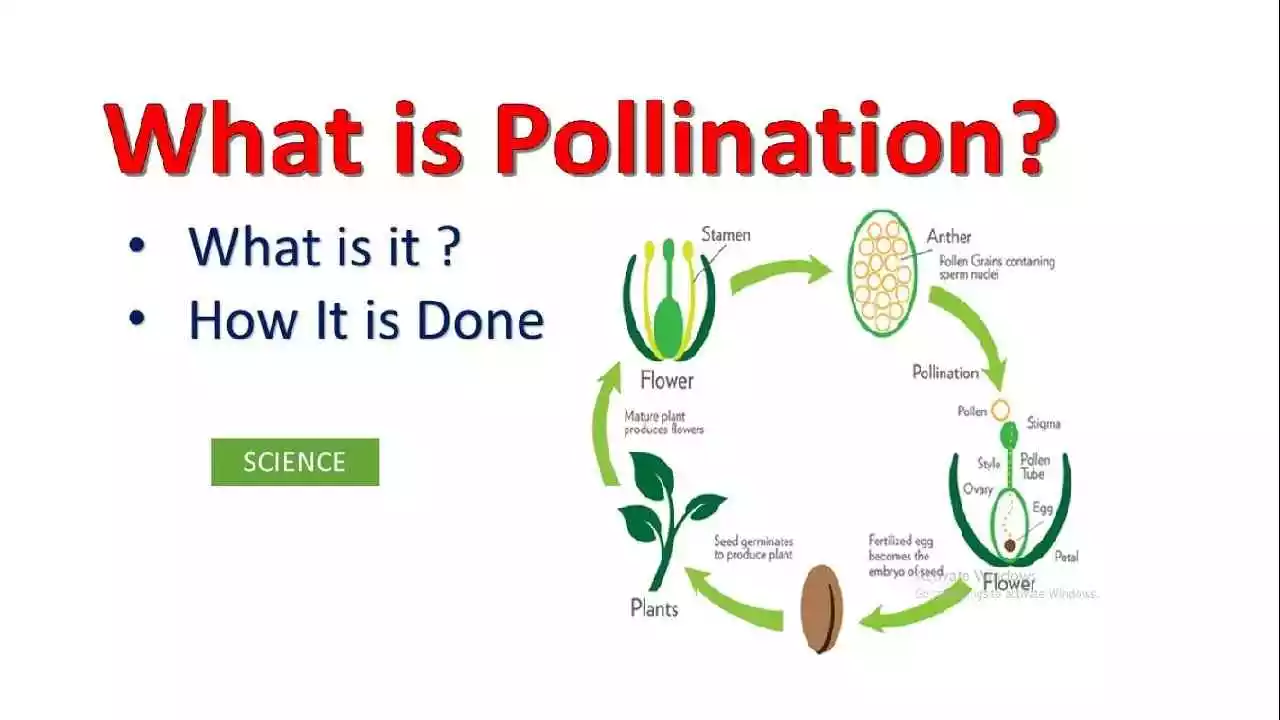
What is pollination? Types & Importance
"If the bees disappeared, man would only have four years to live."
This famous phrase is attributed to scientist Albert Einstein, who understood the importance of bee pollination and the essential role of bees in the proper functioning and ecological balance of planet Earth.
Although honey bees (Apis mellifera or western honey bee or European honey bee) are probably the most well-known pollinating insect species, the reality is that there are over 2000 species of wild bees in the world.
But ... What is pollination? What are the types of pollination? What is the definition of pollination?
If you want to learn more about the amazing world of pollination, this article is for you, because we take the time to explain pollination to you in a simple way.
What is plant pollination?
The pollination of plants is the biological process by which the pollen is transported male structures of a flower to the female parts. It can be either within the same plant (when the flowers of the male and female members or the plant flowers male and female), or between different plants (in species where there are plants with only male flowers and other plants with only female flowers). In the latter case, the process is called cross pollination.
Thanks to this curious process, the first phase of the reproduction of plant species (or fertilization) is achieved. So, if you are wondering about the role of pollination, we can clearly state that it is the first step towards the survival and evolution of plant species, through their reproduction.
Now we are going to cover, how exactly pollination takes place, we will also look at the different types of pollination that exist in nature, as well as the importance of manual or artificial pollination, and the importance of this process.
How is pollination going?
As we have seen in the previous paragraphs, the process of pollination is necessary for fertilization to take place, and it is this that allows plants to reproduce. But ... What exactly is pollination?
Natural pollination is the transfer of pollen by agents biotic and abiotic , which shall ensure that the male gametes (pollen) present on the stamens of flowers are deposited on the pistil flowers and fertilize the female gametes (eggs).
This process involves many different pollination strategies, developed both by the pollinators and by the plants themselves.
As an example of the process of pollination with adaptation of the plants themselves and through insects, we highlight the astonishing case of the bumblebee orchid (Ophrys bombyliflora), whose colors and texture resemble the body of the female of some species, bumblebees.
Through this mimicry, the orchid manages to attract male bumblebees, which then carry the pollen grains on their hairy body until they reach another orchid, thus achieving the pollination of this plant species.
Types of pollination
There are two types of pollination:
- Self pollination
- Cross pollination
Now we are going to discuss these types of pollination in detail:
Self pollination
Some plants like wheat, peas , beans or tomatoes are strictly self-pollinating, that is, they only use self -pollination to reproduce: the lines remain pure, and there is no hybridization or genetic variability. For example, in the pea, even when the flower is open, the sexual organs are protected by a keel, fertilization thus takes place sheltered from the external environment: cross-pollination is impossible without human intervention.
Cross pollination
Cross-fertilization, or allogamy (sexual reproduction involves two distinct individuals belonging to the same species) allows genetic mixing: the genes of the two parents are recombined and the daughter plants can have different characteristics from those of the mother plants. This can be an advantage (larger and more fruit, more resistant plants, appearance of new characters), which is used in the hybridization process.
The various modes of pollination
The plant world never ceases to amaze us and it hides mysteries as astonishing and surprising as the existence of plants pollinated by the wind. In this paragraph, we will tell you about the modes of pollination that exist:
- Wind pollination or air pollination.
- Hydrophilic pollination or water pollination.
- Zoophilic pollination or pollination by animals.
The wind pollination: random method, it is the simplest but also the least effective because the quantities of pollen must be enormous and meet the species which corresponds to them. Pines, oaks, willows and grasses use this method. It is these pollen which are at the origin of most of the famous allergic rhinitis.
Water (Hydrogamy): it concerns some aquatic plants which disperse their pollen in the water.
In the Zoophilic pollination, the entomophilic pollination (insect pollination) subgroup is the most important, as there are thousands of insect species that pollinate millions of plants in the ecosystems of the planet.
Importance of pollination
We have already seen most of the importance of pollination for plants and how it is carried out, as well as the different types of pollination that exist. It only remains for us to talk about the great importance of pollination for nature and for us.
Pollination is essential for maintaining the balance of ecological systems, as well as for the food security of populations, since the production of agricultural systems depends directly on the pollination of crops.
Pollination allows the fertilization and reproduction of plant species, thus ensuring the existence of new plant individuals and the perpetuation of the species.
It is therefore the process that allows plants to reproduce and directly feed herbivorous and omnivorous animals and, indirectly, carnivorous animals.
On the other hand, the existence of a large biodiversity of pollinators optimally promotes crop yields and the balance of natural ecosystems.
Thus, in agricultural and natural ecosystems, resilience can be developed thanks to the biodiversity of the pollinators that compose them, whose ecological function and response to environmental conditions make it possible to minimize the risks due to climate change that threaten current and future ecosystems.
What are the different types of pollinators?
Intended to promote the fertilization of flowering plants, pollination requires the help of external actors. Of these, insects like bees and butterflies are the most well-known. Other pollinators such as birds, humans, water and wind are also involved in this process.
Pollinating insects
Attracted by the shape, smell and color of plants, pollinating insects help fertilize flowering plants. They carry pollen from a stamen to the pistil in order to facilitate the reproduction of the latter. Thus, bumblebees, butterflies or bees that forage on flowers cover themselves with pollen which they deposit on another flower.
You should know that apart from making honey, solitary or social bees participate mainly in the reproduction of flowering plants. In addition, generally speaking, pollinating insects are involved in the production of 84% of cultivated species in Europe. It is also thanks to them that more than 80% of plant species around the world evolve or survive.
Birds and bats
Pollination can be ensured by invertebrates but also vertebrates such as birds and bats. Often attracted by flowers with long and narrow corollas, birds such as honey-eaters, souimanga for hummingbirds plunge their beaks inside them. The pollen then settles on the feathers of their head, then they carry it to another pistil.
In addition, the bats which extract the nectar from the flowers contribute to their reproduction. Indeed, thanks to the elongated shape of their tongue, they reach the nectar and promote cross-pollination of plants.
Water and wind
When the rain falls, the pollen from the stamens is carried by the water which trickles over the whole flower. The pollen then reaches the pistil allowing the fertilization process to begin.
Spreading the pollen in the air, the wind carries it from one flower to another. Indeed, the pollen weighs only a few milligrams and is moved with the slightest breath of the wind. The latter thus lifts the fine grains which are then deposited on the female organ.
The man
With the help of his hands, man can create many kinds of plants. For this, he deposits the pollen of one plant on another and thus obtains a new variety. In addition to being an actor in pollination, it thus contributes to the creation of hybrids.
Human intervention is particularly necessary in the context of growing vanilla outside its region of origin. It is the birds and insects peculiar to South America that usually take care of the natural fertilization of this plant. When it is cultivated in another region, the man has to take care of its reproductive process himself in order for it to give pods.
Related Articales
Recently Posted
-
भगवान गौतम बुद्ध जीवन परिचय | Gautam Buddha in Hindi
December 15, 2022. -
कार्बन के अपररूप Allotropes of Carbon in Hindi
November 5, 2022. -
मिश्र धातु किसे कहते हैं? उपयोग, नाम, गुण Alloy in Hindi
July 27, 2022. -
गलनांक किसे कहते हैं? परिभाषा, उदाहरण Melting Point in Hindi
July 20, 2022. -
परिमाप किसे कहते हैं? Perimeter in Hindi
July 19, 2022.




